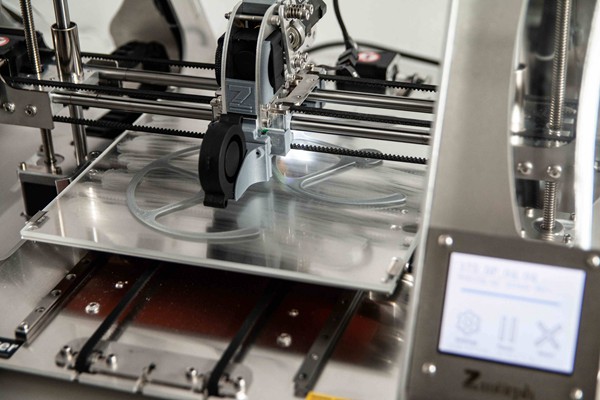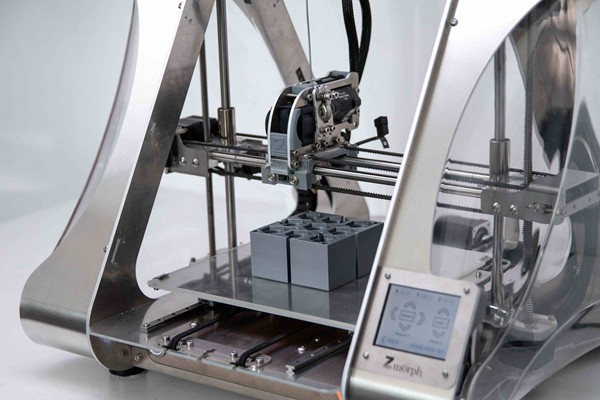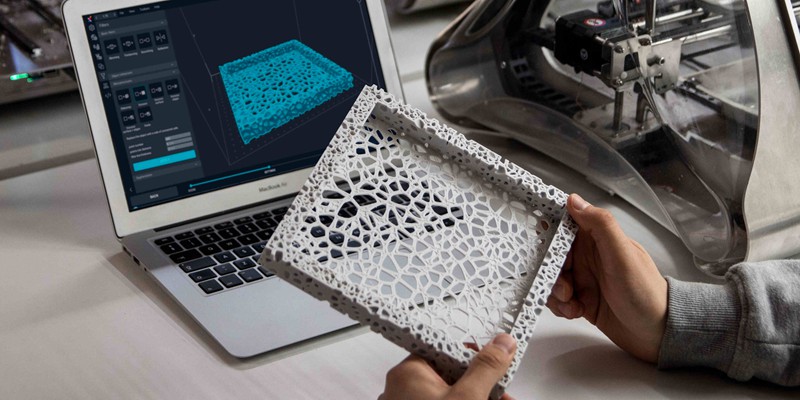- October 14, 2021
3D printing is one of the most rapid developments in recent years compared to traditional processing methods, and it is becoming more convenient and cost-effective. It has many key factors. Such as material factors, printing technology, resolution of the model file, wall thickness, etc. The wall thickness is often the initial stage of the design and should be the most necessary factor to consider, as you will only find out after the print is completed that an unsuitable wall thickness will frustrate you.
What is the wall thickness?
Wall thickness is a very important concept in 3d printing, wall thickness is the distance between the inner and outer surface of the model, the minimum wall thickness directly determines the strength of the printed item, and even determines whether the item can be printed. A reasonable wall thickness can be used for many benefits, including optimizing the structure, saving costs, avoiding various accidents, etc. It can not only show your design perfectly but also make it perform better in the work.
Why should You consider the right wall thickness?
Thick wall thickness is undoubtedly the better choice for parts in some particularly high-strength operating environments. However, reducing the wall thickness seems to be more cost-effective and the benefits of a lighter wall thickness can be even more pronounced when the function and strength of the part are not compromised. For example:
1. Save time and costs for printing, allowing for faster cooling and achieving higher output ratios.
2. Warpage from the cooling process is largely avoided.
3. The lighter weight allows for easier transportation and management.
Noteworthy, The wall thickness of the part is not the thinner the better, but the best choice is to reduce the unnecessary wall thickness according to the structure and shape of the different requirements, taking into account the difficulty of printing and the requirements of the part while ensuring its functionality.

The consequences of unsuitable wall thickness
3D printed parts often have thin walls that bend and parts that warp, either because the walls are too thin or because support structures are not used to keep the part in place during the printing process. Since printers work layer by layer, it is important to make sure that the layers are in stable contact with each other and have additional support during the printing process, just like building a building, we need concrete to be tightly bonded and reinforcing steel to support it.
(1) Warping
Warping refers to the printing process, the bottom corners of the object appear upward curved, the light will make the object deformation, and the heavy will make the object fall off on the way to print so that the print completely failed. The cause of warping is due to the shrinkage of the print material when it cools down after coming out of the high heat nozzle, and if the shrinkage around the large object is larger when printing, it will appear deformation. ABS material is more severe than PLA shrinkage, so the printing of large objects with ABS is a very difficult thing.
(2) Curling
Curling is a common problem in the 3D printing process, which is due to the principle of thermal expansion and contraction of the printing material, making the model and the printing platform in contact with the bottom edge is more likely to warp, or even off the platform, the lighter the impact on the printing effect, causing deformation of the bottom of the model, the heavier it will lead to print failure.

Choose the uniform wall thickness
Uniform wall thickness is very necessary for the cooling process of 3D printing. By joining parts with a large difference in thickness in certain excessive parts, then this part is likely to warp, crack, kettle, or even affect the whole during the cooling process. To avoid the effects due to stress and shrinkage, a consistent and uniform wall thickness is the best choice, even if a consistent wall thickness cannot be guaranteed, then a gradually excessive wall thickness is a good approach.

4 Factors to be considered in designing wall thickness
(1) Material
Each material has its inherent properties, there are fragile, there are strong, there are glossy, there are rough, there are light, there are heavy, and so on. Different materials have different design principles
Different materials use different printing technology, ABS / PLA using FDM; nylon, aluminum using SLS; resin using SLA or DLP. various printing technology to create the surface effect varies, there is a point of different printing technology printers print size space is not the same, the print post-processing methods are different, some complex, some simple
(2) Product working environment and function
Is the product’s working environment high temperature, high humidity?
Whether the product will be exposed to sunlight and wind for a long time?
Does the product need to work in a high-load environment?
Does the product need to be transparent or have good optical properties?
Does the product need a specified color, whether it is the color of the material itself or achieved by spray painting?
(3) Design of the product
The shape and size of the product, reinforcements, rounded corners, bevels, and transitions are all referenced by the wall thickness. The wall thickness of the product depends on the final demand of the product and the external force that the product needs to withstand, whether it is under the pressure of other parts or needs to be used as a supporting part for other parts. The wall thickness is determined based on the initial design of the product to simulate the scenario when it actually works, the weight, properties, electrical properties, stability, dimensional accuracy, and assembly requirements of the final product.
(4) Cost
A thin wall is the most material cost-saving option, but it is also potentially the most costly option because there is a high probability that the item printed to save material cost will fail. Redesigning and printing not only wastes more material but also wastes valuable time. Designing and printing the wall thickness of an item based on its size, capacity, and working environment is undoubtedly the best option if the optimal wall thickness can be determined based on these.

conclusion
After considering all of the above, I believe you have a suitable choice of material and wall thickness. Of course, before your solution is finalized, you can still make inquiries to our engineers and we will recommend you more candidate materials and detailed processing solutions. Get in touch with WayKen and get our advice.





